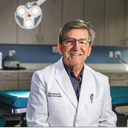Posted underBreast Lift q&a
Mastopexy advice needed. Would removal of the skin achieve the lifted look? (Photo)
Unhappy with mastopexy result: breasts are side- heavy, folding onto themselves. I feel that there is an excess skin envelope containing my breast/fat tissue. Would the removal of the skin (revision mastopexy) achieve the lifted look my breast have in the raised arms pictures? Are they bottomed out? I don't care about the lack of upper pole fullness ( which I know is only achievable with an implant that I don't desire) or cup size.My goal is tight lower pole skin without ptosis( or pseudo ptosis)
Answers (11)
From board-certified doctors and trusted medical professionals
Dr. George Marosan, MD

Dr. George Marosan, MD
Board Certified Plastic Surgeon
Answer
Dr. Adam Tattelbaum, MD

Dr. Adam Tattelbaum, MD
Board Certified Plastic Surgeon
Answer
Dr. Scott W. Vann, MD, FACS

Dr. Scott W. Vann, MD, FACS
Board Certified Plastic Surgeon
Answer
Dr. Daniel Barrett, MD

Dr. Daniel Barrett, MD
Board Certified Plastic Surgeon
Answer
Dr. Gary M. Horndeski, MD

Dr. Gary M. Horndeski, MD
Board Certified Plastic Surgeon
Answer
Dr. Ronald J. Edelson, MD

Dr. Ronald J. Edelson, MD
Board Certified Plastic Surgeon
Answer
Dr. Connie Hiers, MD, FACS
Dr. Connie Hiers, MD, FACS
Board Certified Plastic Surgeon
Answer
Dr. Johnson C. Lee, MD
Dr. Johnson C. Lee, MD
Board Certified Plastic Surgeon
Answer
More Breast Lift Questions
See all Breast Lift Q&AWE SEND PRETTY
EMAILS
What’s trending? Who’s turning heads? Which TikTok myths need busting? We’ve got you. No fluff, no gatekeeping—just real talk. Get our free, unfiltered newsletter.
